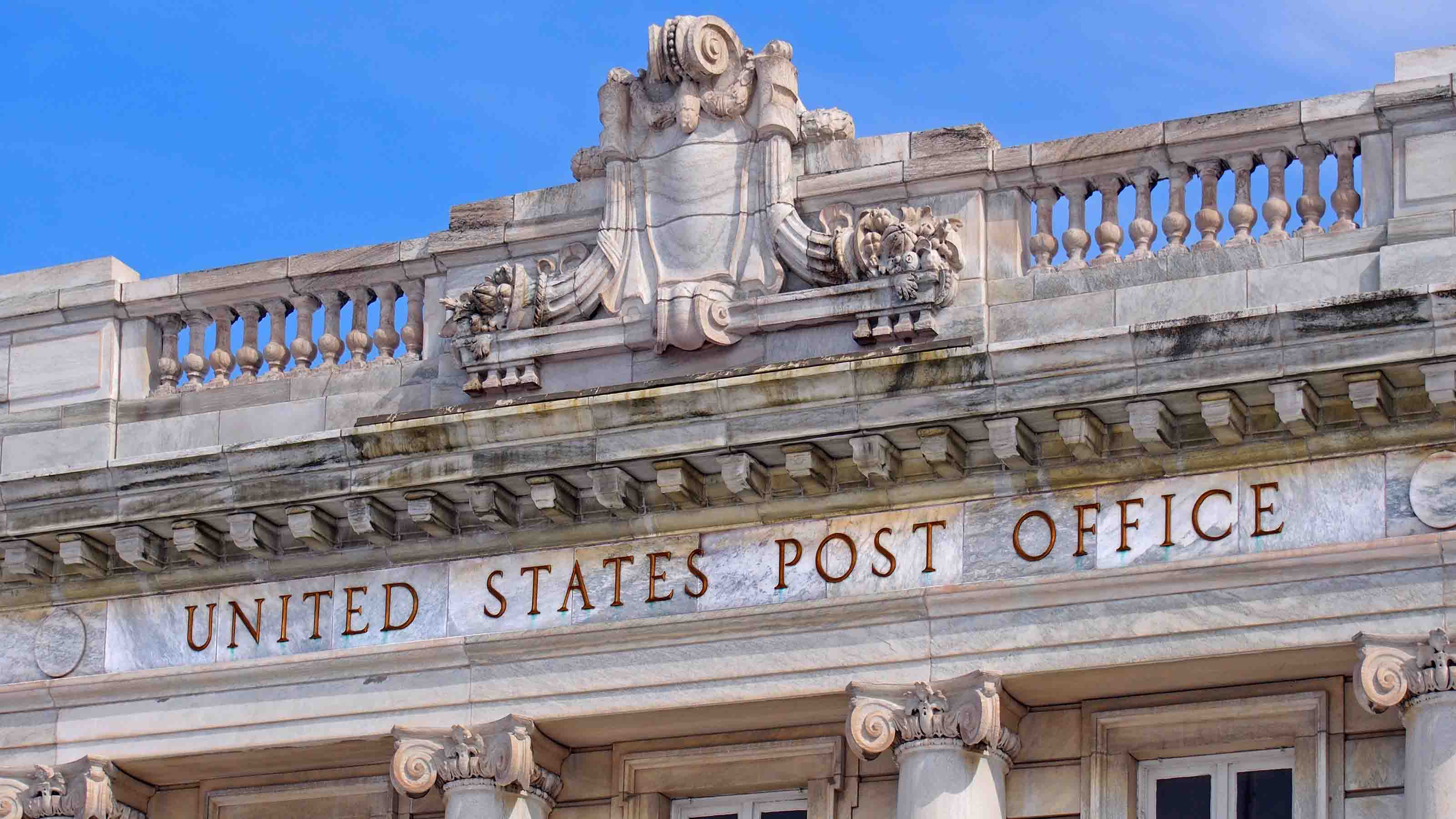Banking at the Post Office May Be Making a Comeback
Advocates say the Postal Service can provide access to an essential financial system while bolstering its own economic position.

The U.S. Postal Service began offering expanded financial services in a handful of cities last fall, a potential first step toward a return to postal banking. In a pilot program, select Postal Service locations in four cities—Washington, D.C.; Falls Church, Va.; Baltimore; and the Bronx, in New York City—are offering services including check cashing, bill paying, ATM access, and expanded money orders and wire transfers. For example, customers can cash payroll or business checks of up to $500 and put the money onto a gift card.
According to the Federal Reserve, about 63 million Americans are under- or unbanked, meaning they do not have regular access to commercial banking and instead typically rely on high-fee options such as check-cashing outlets, money orders and prepaid cards. The USPS, which has more than 34,000 locations, could help close that gap. Advocates for postal banking see an opportunity for the Postal Service to provide access to an essential financial system while bolstering its own economic position. The USPS Office of the Inspector General reported that fees for financial services, even if set at a low cost, would bring in nearly $9 billion a year if 10% of those who are currently underbanked use the service.
It would require an act of Congress to reestablish postal banking beyond the services available in the pilot program. Progressive members of Congress have supported legislation that would reestablish postal banking. For example, Sen. Kirsten Gillibrand (D-N.Y.) has proposed the Postal Banking Act, legislation that would create a postal bank to provide low-cost basic financial services to people who do not have access, or have limited access, to America’s banking system. But Sen. Ted Cruz (R-Texas) and 18 Senate colleagues recently signed a letter opposing the idea.

Sign up for Kiplinger’s Free E-Newsletters
Profit and prosper with the best of expert advice on investing, taxes, retirement, personal finance and more - straight to your e-mail.
Profit and prosper with the best of expert advice - straight to your e-mail.
The idea of banking at the post office isn’t new: Congress passed legislation to establish the Postal Savings System in 1910. It was designed to encourage working people and immigrants to use the banking system. The program started in 1911, and by 1947, deposits in the system had peaked at $3.4 billion. In the 1960s, deposits declined as more consumers turned to banks. In 1966, the Postal Service began to phase out the program.
Get Kiplinger Today newsletter — free
Profit and prosper with the best of Kiplinger's advice on investing, taxes, retirement, personal finance and much more. Delivered daily. Enter your email in the box and click Sign Me Up.
-
 The AI Doctor Coming to Read Your Test Results
The AI Doctor Coming to Read Your Test ResultsThe Kiplinger Letter There’s big opportunity for AI tools that analyze CAT scans, MRIs and other medical images. But there are also big challenges that human clinicians and tech companies will have to overcome.
By John Miley Published
-
 The Best Places for LGBTQ People to Retire Abroad
The Best Places for LGBTQ People to Retire AbroadLGBTQ people can safely retire abroad, but they must know a country’s laws and level of support — going beyond the usual retirement considerations.
By Drew Limsky Published
-
 What Does Medicare Not Cover? Eight Things You Should Know
What Does Medicare Not Cover? Eight Things You Should KnowHealthy Living on a Budget Medicare Part A and Part B leave gaps in your healthcare coverage. But Medicare Advantage has problems, too.
By Donna LeValley Published
-
 CPI Report Puts the Kibosh on Rate Cuts: What the Experts Are Saying About Inflation
CPI Report Puts the Kibosh on Rate Cuts: What the Experts Are Saying About InflationCPI Consumer price inflation reared its ugly head to start the year, dashing hopes for the Fed to lower borrowing costs anytime soon.
By Dan Burrows Published
-
 Fed Leaves Rates Unchanged: What the Experts Are Saying
Fed Leaves Rates Unchanged: What the Experts Are SayingFederal Reserve As widely expected, the Federal Open Market Committee took a 'wait-and-see' approach toward borrowing costs.
By Dan Burrows Published
-
 15 Reasons You'll Regret an RV in Retirement
15 Reasons You'll Regret an RV in RetirementMaking Your Money Last Here's why you might regret an RV in retirement. RV-savvy retirees talk about the downsides of spending retirement in a motorhome, travel trailer, fifth wheel or other recreational vehicle.
By Bob Niedt Published
-
 CPI Report Keeps the Fed on Track: What the Experts Are Saying About Inflation
CPI Report Keeps the Fed on Track: What the Experts Are Saying About InflationCPI Disinflation in key areas of consumer prices should help the Federal Reserve stick to its policy path of gradual cuts to interest rates.
By Dan Burrows Published
-
 Blowout December Jobs Report Puts Rate Cuts on Ice: What the Experts Are Saying
Blowout December Jobs Report Puts Rate Cuts on Ice: What the Experts Are SayingJobs Report The strongest surge in hiring since March keeps the Fed on hold for now.
By Dan Burrows Published
-
 Fed Sees Fewer Rate Cuts in 2025: What the Experts Are Saying
Fed Sees Fewer Rate Cuts in 2025: What the Experts Are SayingFederal Reserve The Federal Reserve cut interest rates as expected, but the future path of borrowing costs became more opaque.
By Dan Burrows Published
-
 CPI Report Casts Doubt on Rate Cuts in 2025: What the Experts Are Saying About Inflation
CPI Report Casts Doubt on Rate Cuts in 2025: What the Experts Are Saying About InflationCPI November Consumer Price Index data sealed the deal for a December rate cut, but the outlook for next year is less certain.
By Dan Burrows Published